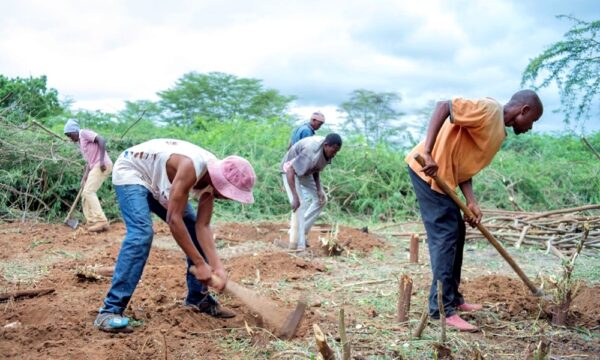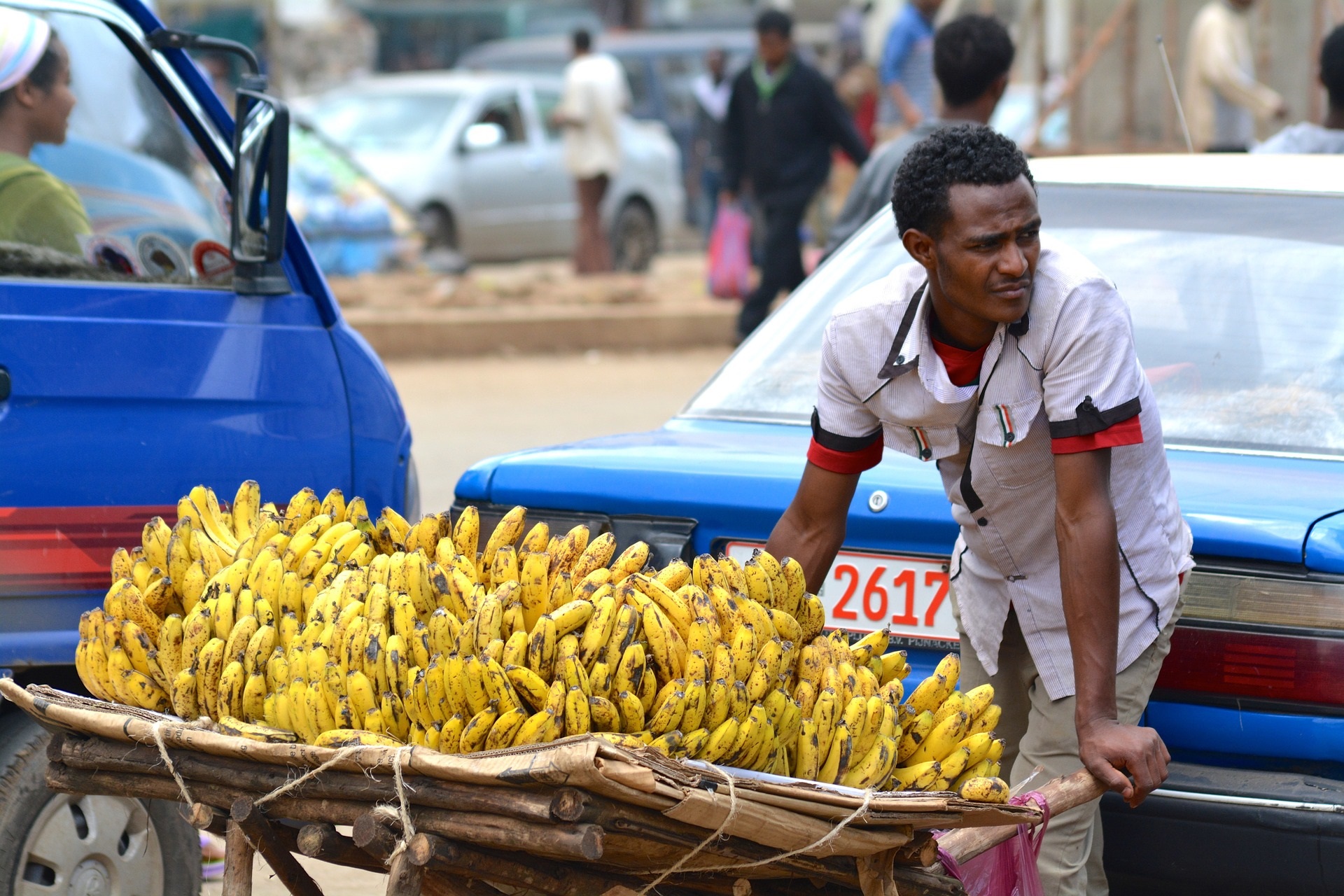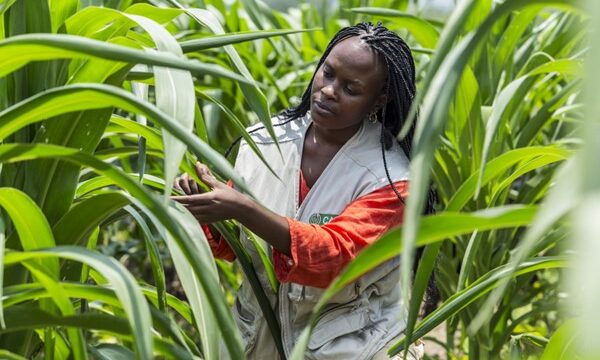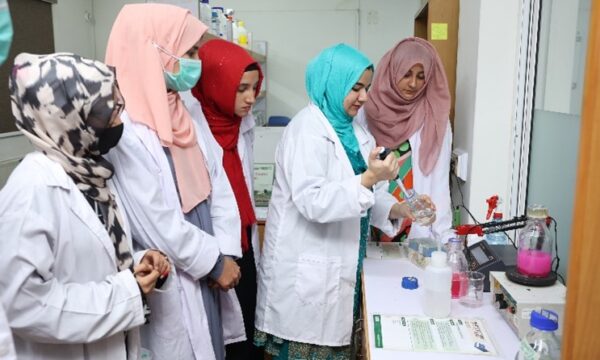
When we think about food waste, what might spring to mind are those bags of lettuce gone bad in the crisper drawer of the fridge or refuse bins at the back of supermarkets full of items that have gone past their sell by date, writes Tamsin Davis, Development Communications Manager at CABI.
But do we think about in-field or pre-harvest losses – crops that were damaged in the field by insects? It is estimated that as much as 40% of all food grown is lost to pests and diseases. Today, the International Day of Awareness of Food Loss and Waste, is an important day to think about food loss and waste, including how we tackle it no matter where it happens – from farm to fork.
Crop loss and waste is a serious threat to global food security. In future, we will need to grow more crops. Why? The global population is steadily increasing and, with it, the consumption of crops by humans and by livestock. However, at the same time, crops are being exposed to growing threats from climate change, the migration of diseases and pests, and ineffective crop management practices.
Food loss and waste can exacerbate not only global hunger but also poverty. Losses of staple cereal crops directly impact food security, while losses of commodity crops have major impacts on both household livelihoods and national economies.
In a nutshell, the world needs more crops at a time when crops are under growing pressure. These conflicting trends mean food and nutrition security will be threatened if we do not take time to understand the potential burden.
We need to reduce crop losses
Reducing pre-harvest crop losses in areas that are already cultivated is a cost-effective way to improve food security and secure livelihoods. However, one of the major factors preventing the ability of policymakers and scientists to make evidence-based decisions on how to develop impactful policies, coordinate responses and effectively allocate resources is a lack of reliable evidence on the scale, scope and trends of crop loss.
Policymakers and scientists need access to better data in order to develop interventions that address the biggest food security problems and maximise the return on investment in food production and long-term sustainable farming systems.
How much do we really understand risks within the global food supply chain and the implications those risks have for the future of food and nutrition security? Can we look to another global sector – health – for inspiration and solutions?
Commissioned in 1990 by the World Bank, the Global Burden of Disease Study (GBD) has had a profound impact on setting health agendas globally, bringing attention to otherwise hidden or neglected challenges.
It quantified the impact of more than 100 diseases and injuries in eight regions of the world, introducing the disability-adjusted life year (DALY) as a new metric to quantify the burden of diseases, injuries and health risks. Academic papers from GBD have been cited more than 11,000 times since the study was published.
As the COVID-19 pandemic brings into focus the connection between food and health, should we be looking at best practice in the health sector to address food and nutrition security?
In the same way that scientists warned of the dangers of a global pandemic long before the arrival of COVID-19, agronomists are warning of the dangers of plant pandemics for food security. Today, on the International Day of Awareness of Food Loss and Waste, we draw attention to the hidden burden of crop loss and its implication for food and nutrition security.
The global burden of crop loss

In response to this demand, a global consortium of partners has been created to produce rigorous and trusted metrics about the burden of loss across geographies and crops. Named the Global Burden of Crop Loss (GBCL), the consortium brings skills in data manipulation and modelling to lead this complex endeavour.
Inspired by GBD in human health, GBCL aims to report the economic burden of crop loss at different geographic scales, estimating the burden in terms of the economic cost of crop loss as well as the economic cost of controlling loss such as labour. The consortium’s analysis will estimate yield loss based on modelled and theoretical yields as well as actual yields. It will also analyse the causes of crop loss such as crop genetics, management practices and soil health, and environment and weather.
The ultimate aim is to improve global food security. The consortium hopes to provide the most accurate and relevant information for decision makers to allocate resources between crop diseases producing the first estimates in 2023 to show the world where investments in plant health can make significant gains.
The ultimate aim is to improve global food security. The consortium hopes to provide the most accurate and relevant information for decision makers to allocate resources between crop diseases, producing the first estimates in 2023 to show the world where investments in plant health can make significant gains. In this way, we hope crop data can form a valuable tool in making a concrete move towards achieving the Sustainable Development Goals (SDGs).
Additional information
All images courtesy of Pixabay.
Global Burden of Crop Loss
Lost crops impact on local and global food security and trade. There is an urgent need for evidence to help prioritise research and policy in plant health. Despite this, data on the scale and causes of crop loss are sparse and outdated.
The Global Burden of Crop Loss will provide outputs, based on data, that will be communicable across sectors and geographies. Find out more here.
Related News & Blogs
Strengthening the potato value chain in the Kurdistan Region of Iraq
On 30th May, we marked the International Day of Potato. In this blog, CABI’s Crop Health Advisor Anna Wood provides an update on a five-year project led by CABI to strengthen the potato value chain in the Kurdistan Region of Iraq. An ambitious five-yea…
3 June 2025




